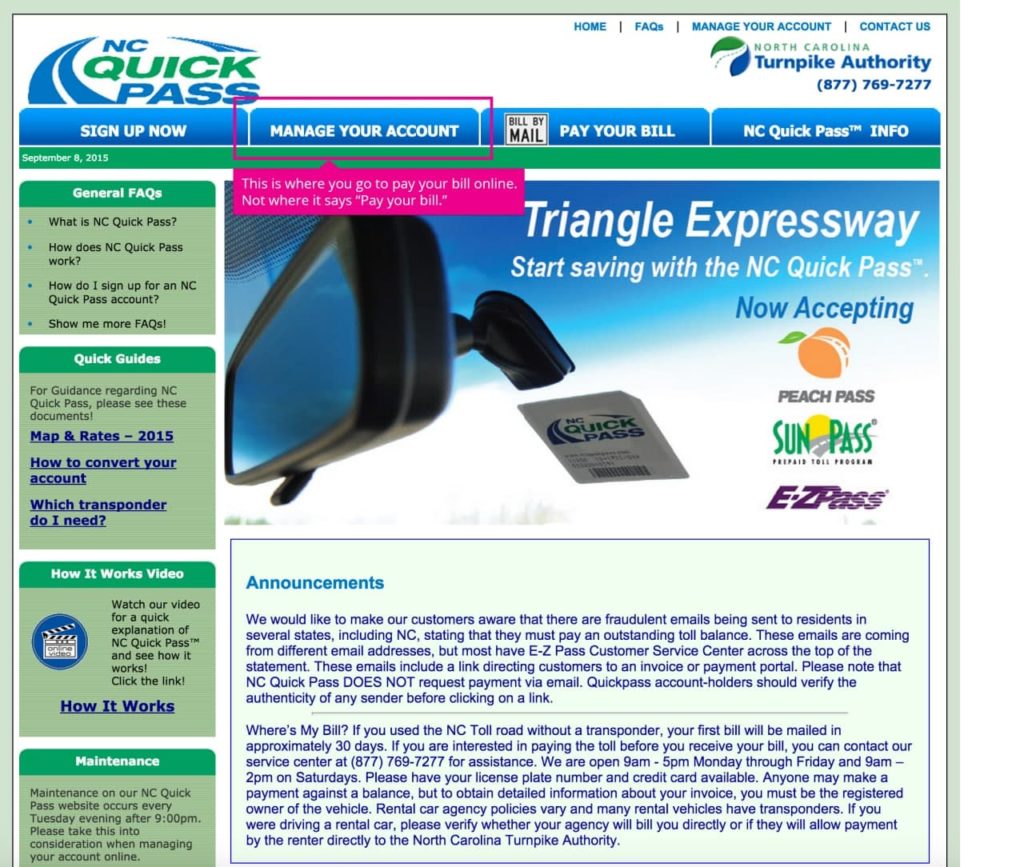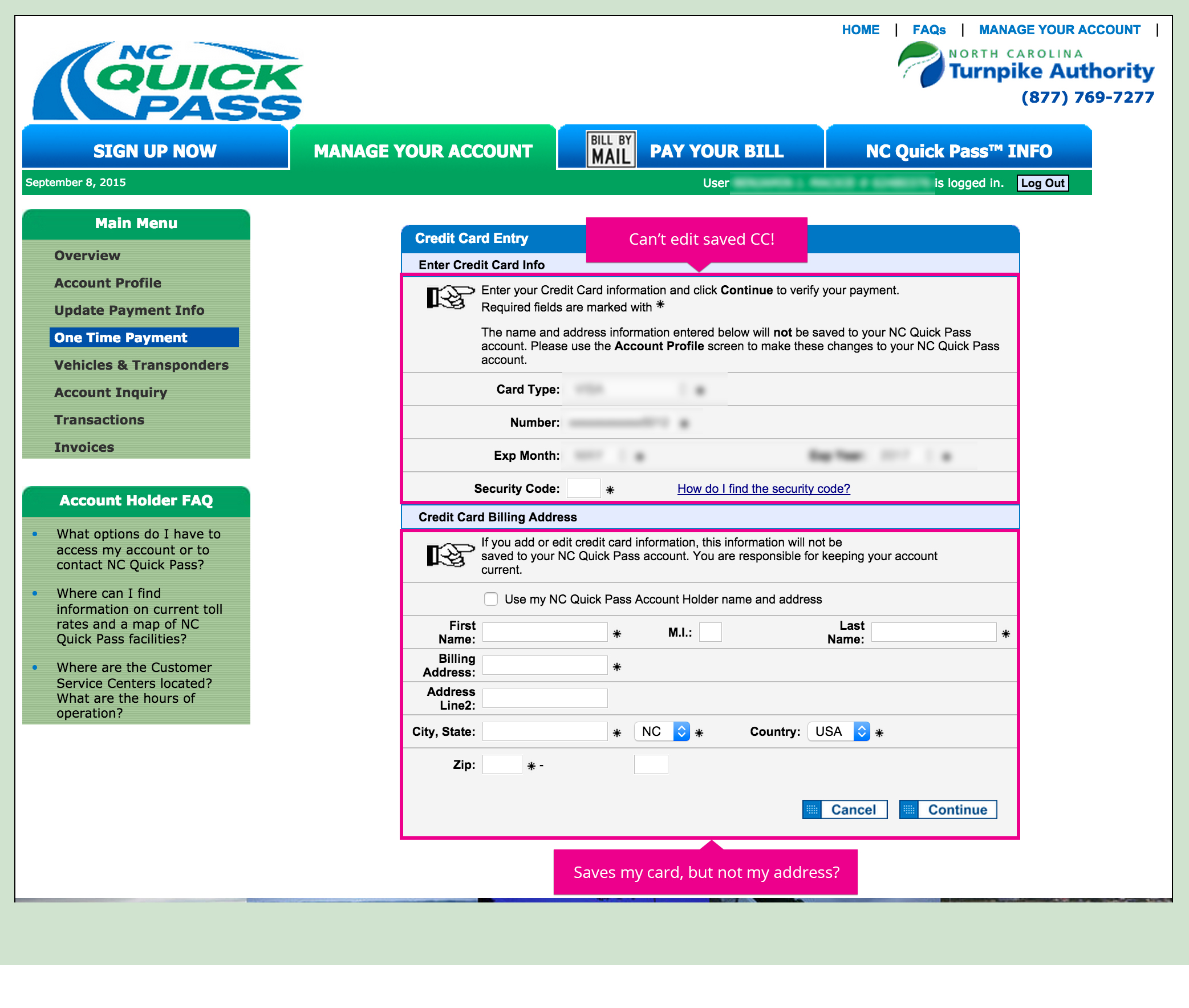Paying roadway tolls is a taxing experience by its very nature. And while the frustration of waiting in line to throw a handful of coins into a basket has been mitigated by the implementation of RFID transponders that let people pay fees without stopping, replenishing funds on online can start to feel purgatorial in its own right.
As reader Ben Mackie points out: “The North Carolina toll website is maddening. They give you five different dollar amounts and they don’t store your CC/preferred payment method”
This is already confusing
Oof—flaming hoops!
Ack—how much do I owe?
What do I owe again?
They must think I love typing
Keep these coming. Send them to us via Twitter or Facebook using the hastag #wtfUX or email them to: [email protected] with “#wtfUX” in the subject line. Include as much context as you can, so we get a full understanding of what the f%*k went wrong. Image of traffic jam courtesy Shutterstock.












